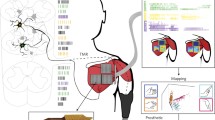Abstract
A microcomputer based control system has been developed to automatically induce and maintain neuromuscular block during surgery. The system repeatedly adjusts the infusion rate of a muscle relaxant, succinylcholine, based on the evoked, rectified, and integrated electromyogram (EMG). The system was tested in 12 patients for a 30-min infusion period with a setpoint of 80% depression of the evoked, rectified, and integrated thenar EMG. The mean time to reach the setpoint for 10 of the patients was 5.5 (±1.87 SD) min and the mean time for 95% recovery after infusion was stopped was 5.4 (±0.83 SD) min. Average overshoot was 9.9% of the baseline (±3.1% SD), and the average time within ±10% of the setpoint was 22.1 min (±7.26 SD). The total dose of succinylcholine for these 10 patients ranged from 1.21 to 3.77 mg/kg with a mean of 1.92 mg/kg. The other two patients were relatively insensitive to the drug and the controller was unable to bring the response to the set-point due to a ceiling placed on infusion rate by the control algorithm.
Similar content being viewed by others
References
Brown, B.H., J. Asbury, D.A. Linkens, R. Perks, and M. Anthony. Closed-loop control of muscle relaxation during surgery.Clin. Phys. Physiol. Meas. 1:203–210, 1980.
Cass, N.M., D.G. Lampard, Brown, W.A., and J.R. Coles. Computer controlled muscle relaxation: A comparison of four muscle relaxants in the sheep.Anaesth. Intensive Care 4:16–22, 1976.
Eger, E.I.,Anesthetic Uptake and Action. Baltimore: Williams and Wilkins, 1974, pp. 316–319.
Epstein, R.A., and R.M. Epstem. The electromyogram and the mechanical response of indirectly stimulated muscle in anesthetized man following curarization.Anesthesiology 38:212–223, 1973.
Epstein, R.M. and R.A. Epstem. Electromyography in evaluation of the response to muscle relaxants. InMuscle Relaxants, edited by R.L. Katz, New York: American Elsevier Publishing Co., 1975, pp. 299–312.
Katz, R.L. and J.F. Ryan. The neuromuscular effects of suxamethonium in man.Br. J. Anaesth. 41:381–390, 1969.
Shanks, C.A. and J.E. Jarvis. Electromyographic and mechanical twitch responses following suxamethonium administration.Anaesth. Intensive Care 8:341–344, 1980.
Wagner, J.G., Kinetics of pharmacologic response. I. Proposed relationship between response and drug concentration in intact animal and man.J. Theor. Biol. 20:173–201, 1968.
Waud, B.E., Decrease in dose requirement of d-tubocurarine by volatile anesthetics.Anesthesiology 51:298–302, 1979.
Author information
Authors and Affiliations
Rights and permissions
About this article
Cite this article
Ritchie, G., Ebert, J.P., Jannett, T.C. et al. A microcomputer based controller for neuromuscular block during surgery. Ann Biomed Eng 13, 3–15 (1985). https://doi.org/10.1007/BF02371246
Issue Date:
DOI: https://doi.org/10.1007/BF02371246




